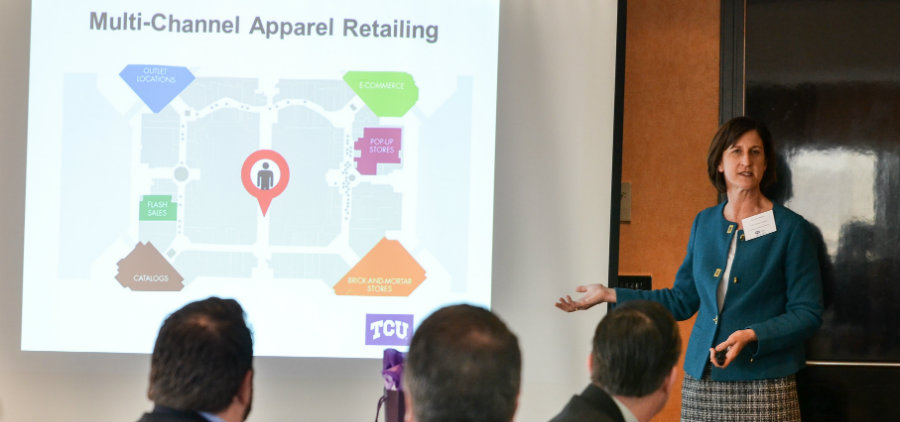What’s your biggest challenge in getting customers what you promised them?
No matter what your organization is – for-profit or nonprofit, product or service based – your supply chain is what causes your daily headaches and provides your greatest opportunities. That’s what prospective students, current students and alumni gathered to discuss at the recent Neeley Executive MBA Preview Luncheon on a chilly Wednesday at the City Club of Fort Worth.
February 09, 2017
What’s your biggest challenge in getting customers what you promised them?
No matter what your organization is – for-profit or nonprofit, product or service based – your supply chain is what causes your daily headaches and provides your greatest opportunities. That’s what prospective students, current students and alumni gathered to discuss at the recent Neeley Executive MBA Preview Luncheon on a chilly Wednesday at the City Club of Fort Worth.
Never content with the sit-and-listen format of a traditional classroom, Dr. Laura Meade, professor of supply chain practice, asked the 41 of us to share our greatest supply chain issues. We heard from a pharma company struggling to comply with regulations, a railroad struggling to build in bad weather, a gaming company trying to predict what will be popular next quarter, a frozen yogurt shop worried about shelf life, and a transportation and logistics company concerned about the “Amazon effect” that has even buyers of massive industrial products expecting two-day delivery.
That became the jumping-off point for a talk about the biggest factors we should be watching in today’s volatile business setting.

What factors are changing business models today?
- Globalization. As we continually look to reduce production costs, we’re buying more from countries like China, with government-subsidized manufacturing. That shift opens up issues with transportation, quality and sustainability. Of course, keep an eye on politics as the new administration seeks to reverse the shift.
- Technology. Technology means more opportunity but also more transparency – for instance, package delivery tracking means your customers can see exactly how efficient you are.
- Value Extension. We have to be the right solution, in the right place, at the right time. Whether that’s offering same-day delivery, or letting customers return an item bought online at a bricks-and-mortar location, as technology makes convenience more and more possible, it’s becoming more expected.
- Sustainability. In the age of information, with a society passionate about social responsibility, we achieve commercial success when we do the right thing. That means being serious about concerns like child labor and the environment. “We do well by doing good,” was Dr. Meade’s pithy proverb.
What should a CEO know?
So how can we address the issues we all brought forward at the beginning? There are some external factors, like weather, we can’t control – so how can our supply chains give us the power to deliver on our promises and make a profit despite those variables?
Here are the top five questions you should ask yourself. (Side note: The supply chain course in the Neeley Executive MBA program will help you answer these.)
- Is your supply chain strategically developed? For instance, why do you have a warehouse on the north side of town? Did you have a relationship with the owner, was it the cheapest option – or is it actually the most efficient place to move and store resources?
- Are your business and supply chain strategies aligned? Your supply chain can be fitted to meet the needs of your business strategy – Walmart delivers on their brand promise of everyday low prices by focusing on a low-cost supply chain.
- Are you studying the right metrics? You get what you measure. We have a tendency to only study the metrics that make our departments look good, but supply chain affects the whole organization. Looking at the right numbers, the right way, could lead to a huge impact on your bottom line.
- How can you build-in quality? From suppliers to transportation methods, if you can prevent defects along the way, you reduce your need for inspections and reorders.
- How can you improve efficiency? Every part of the supply chain has to have a purpose, has to have value. Explore if you can cut or consolidate steps.
--
Find this useful? Join us for the next preview luncheon to enjoy more business insights and meet EMBA alumni, current students, prospective students and faculty.

